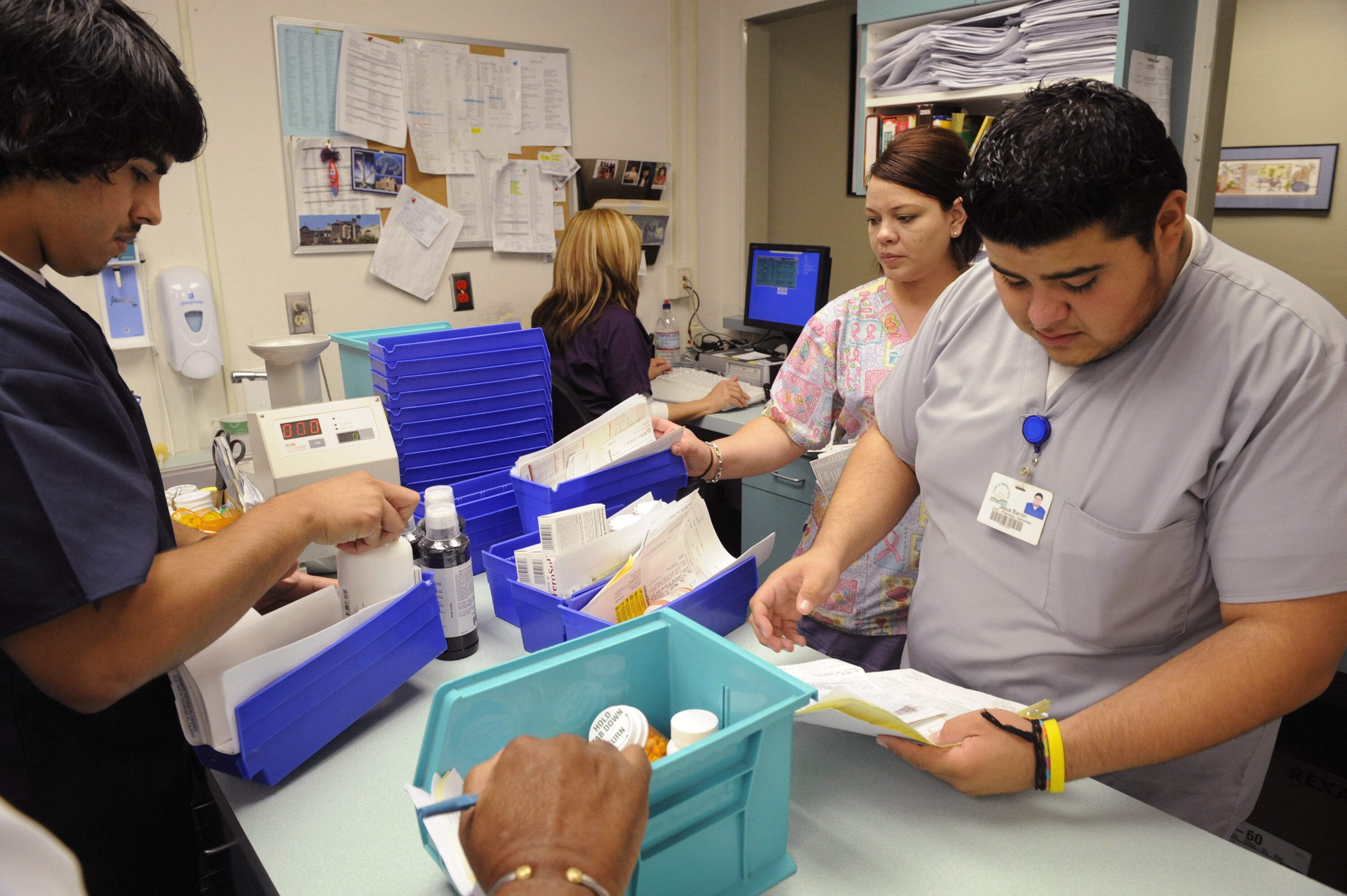The economic case for contraceptive choice

Stay up to date:
Future of Global Health and Healthcare
The headlines from India last November seemed anachronistic: “Web of Incentives in Fatal Indian Sterilizations” and “Deaths Put Spotlight on Indian Sterilization Camps”. The days of forced sterilisation must be behind us, aren’t they? Isn’t demographic pressure taking care of itself in the 21st century, through economic growth and development? If anything, aren’t we worried about population declines in G-7 economies, instead of the opposite elsewhere?
Not exactly. The UN Population Division gives us global population projections, which often are confused as predictions. They are not. Trendlines in global population are revised as new data arrives – and typically, projections are revised upwards. As of 2012, the UN’s medium variant projection would take global population to nearly 11 billion people by 2100. But the accompanying high variant yields more than 16 billion – over twice current population levels – based on the simple addition of one-half a child per woman of reproductive age. These projections may be conservative.
“Things we can’t do much about”
Population issues are often consigned to the list of things ”we can’t do much about.” Demography operates over very long time horizons, and it involves private decisions about sex and reproduction. But in truth, demography can’t be left to demographers. Downplaying our ability to help women, their families and societies deal with population pressures is both wrong and dangerous.
Family planning had receded from the international conversation about development for the past several decades, until the UK Government and Melinda Gates brought the topic back to the forefront with the London Summit on Family Planning in 2012. There, heads of state and foundation leaders made pledges to help fulfill the unmet need for modern contraception on the part of over 220 million women in the world today, women who want to limit their family size or space their children’s births but who don’t have the modern means to do so. The London Summit’s “FP2020” commitment aims to help 120 million women become new users of modern contraception by 2020.
Lessons from Singapore, Tunisia and Rwanda
Is this simply the right thing to do? No. It’s better than that. Fertility decline is an important precedent for economic growth and development, which can take off when the right policies and social investments are in place. We’ve seen this at different periods in Korea, Singapore, Mexico, Tunisia, Rwanda and elsewhere. In contrast, persistently high fertility challenges growth and makes development harder in countries of the Sahel, from Mali to Northern Nigeria to Chad to Central African Republic. Is it a coincidence that ungovernability and high fertility seem like fateful twins? Probably not.
The Indian tragedy points us in precisely the wrong direction when we think about solutions to this problem. One needn’t trick women into sterilization nor treat them as simple demography data points. Instead, we must focus on women as health consumers, with choices and dignity. Like good marketing campaigns anywhere, the best approach to meeting an audience’s needs starts first with listening and understanding the audience as a consumer. Women face barriers to adopting modern contraception ranging from access, to price, to stigma, to poor quality medical providers, or some combination of these. How can we help her overcome these barriers? How can we put her in the position of making an informed choice about a range of contraceptive methods that may suit her needs or tastes?
The link between fertility, health and development
Helping women who already have expressed a desire for modern contraception is all that’s needed to turn this negative trend into a positive one. Meeting the unmet need for family planning on the part of 220+ million women would prevent an estimated 26 million abortions each year (according to the Guttmacher Institute), and catch the world up on the most lagging of the Millennium Development Goals, MDG 5 on improving maternal health.
It would also improve the survival of children born into families wishing to practice birth spacing or limitation. And at a time when conserving the world’s natural resource base is more important than ever, we should recognize that answering a call already in place would have the same environmental effect as stopping all illegal deforestation in the world.
The demographic dividend
Responding to women as health consumers with choices will not only lift them, their families and their economies, it will also help countries that struggle to take advantage of the power of demography for good, rather than seeing it as a curse of underdevelopment. We call this the Demographic Dividend – when fertility decline creates a bulge of working age people who can add measurably to national income generation when empowered with the right social investments in education and job creation strategies.
All of us have a role in meeting women’s contraceptive needs. Governments first and foremost are responsible for setting the policy framework and prioritising health systems investments in order to meet the health needs of their populations broadly. Non-governmental organizations can employ social marketing or other strategies to support governmental efforts to reach in particular poor and vulnerable consumers. International organisations, starting with the UN and specialized agencies such as the UN Population Fund (UNFPA), can help mobilise other donors and channel needed resources to gaps such as health and family planning commodities.
Foundations, such as the Bill and Melinda Gates Foundation and many others that for years have been interested in helping women and children survive and thrive, now see the power of family planning as a pathway to that progress. The private sector supplies modern contraception and contraceptive innovation as part of its commercial mission.
Strategic thinking, not heart strings
The Indian example tugs at our heart strings but should also drive our strategic thinking as well. For the health of many economies in the Global South and the planet itself, a supportive ecosystem that puts the reproductive health of women at the center will save women, improve lives, and build stronger economies. The first step of a successful strategy is simply to listen to women’s needs.
Author: Karl Hofmann is President and CEO of Population Services International
Image: Lu Libing’s wife, Mu, poses for pictures during an interview with Reuters at their home in Ganzhou, Jiangxi province March 13, 2014. REUTERS/Alex Lee
Don't miss any update on this topic
Create a free account and access your personalized content collection with our latest publications and analyses.
License and Republishing
World Economic Forum articles may be republished in accordance with the Creative Commons Attribution-NonCommercial-NoDerivatives 4.0 International Public License, and in accordance with our Terms of Use.
The views expressed in this article are those of the author alone and not the World Economic Forum.
Related topics:
Forum Stories newsletter
Bringing you weekly curated insights and analysis on the global issues that matter.
More on Economic GrowthSee all
Muhammad Osama Khan and James Balzer
September 18, 2025
Eric White and Elia Tziambazis
September 18, 2025
Lars Holmquist
September 17, 2025
Dante Disparte
September 17, 2025
Hazuki Mori and Luigi Scatteia
September 17, 2025
Mekhla Jha
September 15, 2025





